Sailboat MOODY 346 - 1990 (Aava)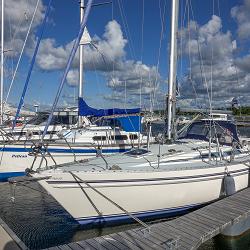 Yacht descriptionDetailed yacht information | Model (class) | | | Name of sailboat | Aava | | Year built | 1990 | | Manufacturer | Marine Projects Ltd. | | Functionality type | Cruiser | | Boat design category | A | | Sail plan | Sloop | | Sail area | 48.12 m | | Type of hull | Monohull | | Material of hull | Fiberglass (GRP) | | Keel | Fin keel | | Length overall | 10.52 m | | Length at Waterline | 8.51 m | | Beam | 3.53 m | | Draught | 1.52 m | | Displacement | 5080 kg | | Ballast | 2041 kg | | Cabins | 2 | | Berth | 6 | | Heads | 1 | | Number of engines | 1 | | Engine type | Diesel | | Engine model | Soleil diesel | | Engines power (overall) | 33 hp | Sailboat mentions in the blogTo search for a sailboat according to various criteria, use the links:. Review of Moody 346Basic specs.. The hull is made of fibreglass. Generally, a hull made of fibreglass requires only a minimum of maintenance during the sailing season. The Moody 346 has been built with different keel alternatives. Shallow keel One option is a shallow keel. A shallow keel allow to sail both coastal and inland waters. The keel is made of iron. Many people prefer lead keel in favour of iron. The main argument is that lead is much heavier than iron and a lead keel can therefore be made smaller which again result in less wet surface, i.e. less drag. In fact iron is quite heavy, just 30% less heavy than lead, so the advantage of a lead keel is often overstated. As the surface of a fin type keel is just a fraction of the total wet surface, the difference between an iron keel and a lead keel can in reality be ignored for cruising yachts. The boat can enter even shallow marinas as the draft is just about 1.14 - 1.24 meter (3.74 - 4.04 ft) dependent on the load. See immersion rate below. Another option is a fin keel. The fin keel is the most common keel and provides splendid manoeuvrability. The downside is that it has less directional stability than a long keel. This keel is also made of iron. The boat can enter most marinas as the draft is just about 1.52 - 1.62 meter (4.99 - 5.29 ft) dependent on the load. See immersion rate below. Moody 346 is typically equipped with an inboard Volvo Penta 2003 diesel engine Sailing characteristicsThis section covers widely used rules of thumb to describe the sailing characteristics. Please note that even though the calculations are correct, the interpretation of the results might not be valid for extreme boats. What is Theoretical Maximum Hull Speed? The theoretical maximal speed of a displacement boat of this length is 7.1 knots. The term "Theoretical Maximum Hull Speed" is widely used even though a boat can sail faster. The term shall be interpreted as above the theoretical speed a great additional power is necessary for a small gain in speed. The immersion rate is defined as the weight required to sink the boat a certain level. The immersion rate for Moody 346 is about 202 kg/cm, alternatively 1135 lbs/inch. Meaning: if you load 202 kg cargo on the boat then it will sink 1 cm. Alternatively, if you load 1135 lbs cargo on the boat it will sink 1 inch. Sailing statisticsThis section is statistical comparison with similar boats of the same category. The basis of the following statistical computations is our unique database with more than 26,000 different boat types and 350,000 data points. What is L/B (Length Beam Ratio)? What is a Ballast Ratio? MaintenanceWhen buying anti-fouling bottom paint, it's nice to know how much to buy. The surface of the wet bottom is about 30m 2 (322 ft 2 ). Based on this, your favourite maritime shop can tell you the quantity you need. Are your sails worn out? You might find your next sail here: Sails for Sale If you need to renew parts of your running rig and is not quite sure of the dimensions, you may find the estimates computed below useful. | Usage | Length | Diameter | | Jib sheet | 10.5 m | (34.5 feet) | 14 mm | (0.55 inch) | | Genoa sheet | 10.5 m | (34.5 feet) | 14 mm | (0.55 inch) | | Mainsheet | 26.3 m | (86.3 feet) | 14 mm | (0.55 inch) | | Spinnaker sheet | 23.1 m | (75.9 feet) | 14 mm | (0.55 inch) | This section is reserved boat owner's modifications, improvements, etc. Here you might find (or contribute with) inspiration for your boat. Do you have changes/improvements you would like to share? Upload a photo and describe what you have done. We are always looking for new photos. If you can contribute with photos for Moody 346 it would be a great help. If you have any comments to the review, improvement suggestions, or the like, feel free to contact us . Criticism helps us to improve. - Info Exchange Login
- Admin Login
 Moody Boat Archive | Please note IPC no longer offer their reprint service for reviews. The concept and design of Moody 33 centre cockpit fin keel model was completed by Angus Primrose in 1972 and tooling was completed in November of that year. This was first production yacht developed jointly between A.H. Moody & Son Ltd, Southampton and Princess Yachts International (Formerly Marine Projects). It was an immediate success and models have appeared ever since. In total, during the past 30 years over 4,500 Moody Yachts have been delivered both in the United Kingdom and throughout the World bringing pleasure and performance to countless thousands of yachtsmen and their families and friends. |  When designing and producing quality products C&J Marine Ltd ensure that attention to detail is of the utmost priority. From coastal day sailing through to blue water adventures; from compact, multi-functional on-board living to grand designs and style, our design and manufacturing experience, products and services are second to none. As a market leader in the industry for over 25 years our reputation precedes us, and our products are the proof! See how we can help with your moody ...Please complete the attached enquiry form, providing us with as much detail as possible as to your requirements and our experienced and friendly sales team will be in touch. " * " indicates required fields You may be interested in these... ACRYLIC CANVAS WHEEL COVER SAILING YACHT PACK-A-MAIN / STACK PACK BOOM AWNING – TOP GUN®C&j newsletter. We would like to keep you up to date on our latest news, seasonal offers and new innovative products. All we need is for you to let us know the most appropriate email address to contact you on and for you to detail what information is of interest to you. © C&J Marine 2024. All rights reserved. Web Design & Development by Eldo Web Design Tomsk-7/Seversk, Russia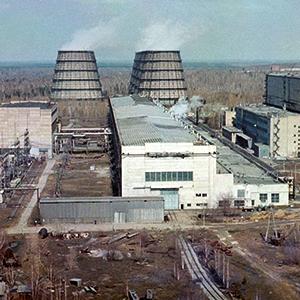 The explosion of a nuclear reprocessing facility in Tomsk-7 dispersed large amounts of radioactivity over an area of 120 km² , exposing tens of thousands of people to increased levels of radiation and contaminating air, water and soils for many generations to come. It is considered the most serious Russian nuclear accident after Chernobyl and the Kyshtym accident at Mayak. Photo: Until the 1990s, the town of Tomsk-7, now known as Seversk, produced military plutonium and nuclear fuel and was home to about 100,000 workers and their families. © GlobalSecurity.org Poster PDF (Download) Tomsk-7 was a “secret city” in Siberia until 1992, when it reverted to its historical name of Seversk. It housed several nuclear facilities for large-scale production of plutonium and uranium for nuclear fuel and weapons, including reprocessing of spent fuel. The closed city was home to about 100,000 workers and their families. One of the worst accidents in the history of the Russian nuclear industry occurred at the Tomsk-7 reprocessing facility on April 6, 1993. That day, workers were pouring nitric acid into a tank in order to separate plutonium from spent nuclear fuel. It is not clear whether the accident was caused by human or technical error, but it is believed that a lack of compressed air caused the mixture of nitric acid, uranium and plutonium to overheat and reach critical temperatures within a few minutes. The ensuing explosion knocked down walls on two floors of the complex, started a fire and released about 250 m³ of radioactive gas, 8.7 kg of uranium and 500 g of plutonium to the environment. This amounted to about 30 Tera-Becquerel (Tera = trillion) of beta- and gamma-emitters and about 6 Giga-Becquerel (Giga = billion) of plutonium-239. An area of 1,500 m² around the plant was severely contaminated, while the radioactive plume covered a total area of 120 km², where increased levels of radioactivity could be detected. The explosion at Tomsk-7 was ranked level 4 of the International Nuclear and Radiological Event Scale (INES), comparable to the Tokai-mura nuclear accident in Japan in 1999. Health and environmental effectsMost acutely affected by nuclear fallout were the villages of Georgievka and Nadezhda. Radioactive snowfall in the days after the disaster created hot-spots with radiation levels of up to 30 µGy/h – approximately 100 times normal background radiation. Soils in the areas affected by radioactive fallout showed significantly increased levels of long-lived radioisotopes such as cesium-137 or strontium-90. Cesium-137 can cause solid tumors and genetic defects in offspring when inhaled or ingested through food or water, while strontium-90 is a known cause for leukemia. With the help of foreign specialists, initial clean-up operations were able to collect and remove about 577 g of plutonium from the area around Tomsk-7. Interestingly enough, only about 450 g of plutonium had been present in the basin before to the explosion, suggesting unreported prior plutonium leaks from the facility. Even months after the explosion, snow samples continued to show increased levels of radioactive isotopes such as plutonium, uranium, zirconium, ruthenium, cerium, niobium and antimony, continually exposing the population to radioactivity. According to the Bellona Foundation, a Norwegian environmental NGO, about 30 major accidents occurred at the Tomsk-7 nuclear facility, releasing about 10 g of plutonium into the atmosphere each year. The NGO also documents large quantities of nuclear waste from 50 years of plutonium production, which have accumulated on the confines of the nuclear facility. Dumped into underground depots or pumped into uncovered holding pools, they pose a continued threat to health. In 2008, a study found increased levels of plutonium and cesium-137 in soils and water samples, suggesting further leaks. Some reactors at Tomsk-7 were shut down in June 2008, following the 2003 agreement between Russia and the U.S. concerning the elimination of weapons-grade plutonium production. The reprocessing of spent fuel and the dumping of nuclear waste on the premises of what is now called the Siberian Chemical Combine continue to this day, however. Despite the findings of increased levels of plutonium, strontium, cesium and other radioactive particles in soil and water, no meaningful medical studies were performed on the local population. In 2001, a county court in Tomsk ruled on a lawsuit by contaminated inhabitants of the village of Georgievka against the Siberian Chemical Combine, deciding that the company was to pay each claimant a compensation sum equivalent of 860 US-Dollars. During the hearings, 14 of the 26 claimants passed away, according to the Bellona Foundation. Their health was compromised for the production of nuclear fuel and nuclear warheads. They, and everyone else in the area whose health was affected by the catastrophe at Tomsk-7, are also Hibakusha. - “The radiological accident at the reprocessing plant at Tomsk.” International Atomic Energy Agency (IAEA), October 1998. www-pub.iaea.org/mtcd/publications/pdf/p060_scr.pdf
- Alimov R. “People vs. Siberian Chemical Combine.” Website of the Bellona Foundation, February 10, 2001. http://bellona.ru/bellona.org/english_import_area/international/russia/nuke_industry/siberia/seversk/22031
- Gauthier-Lafaye F. “Radioisotope contaminations from releases of the Tomsk-Seversk nuclear facility.” Journal of Environmental Radioactivity 2008 Apr;99(4):680-93. www.ncbi.nlm.nih.gov/pubmed/17996340
- Goulet M. “Siberia Nuclear Waste – Case 393.” American University Washington. www1.american.edu/ted/sibnuke.htm
 In Ekker , AlgeriaAt its algerian nuclear test site, in ekker, france performed 13 underground nuclear detonations, causing vast radioactive contamination of soil, air. 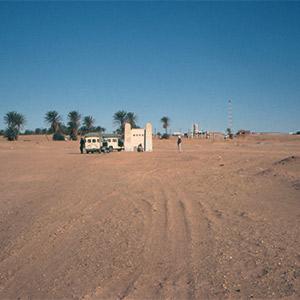 Reggane , AlgeriaThe french army conducted four atmospheric nuclear tests near reggane, algeria in 1960 and 1961, contaminating the sahara desert with plutonium,.  Ezeiza , ArgentinaThe ezeiza atomic center is located in a suburb of argentina’s capital city buenos aires. in recent years, it has been the cause of much concern, as. 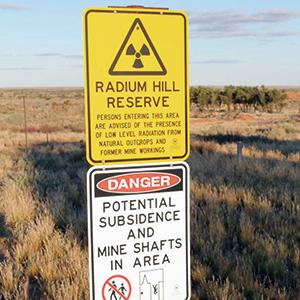 Radium Hill , AustraliaRadium hill, australia’s first uranium mine, was operational between 1906 and 1961. due to their exposure to uranium dust and radon gas, many miners.  Olympic Dam , AustraliaThe uranium mine at olympic dam poses a threat to the ecosystem of the region and a health hazard to the workers and the surrounding populations.. 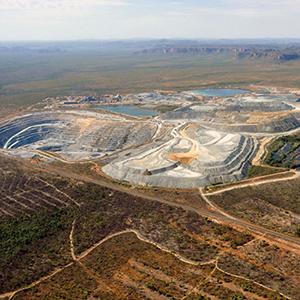 Ranger , AustraliaRanger is an open-pit uranium mine in the middle of the world heritage kakadu national park. numerous radioactive leaks and spills have contaminated.  Emu Field , AustraliaAfter testing its first nuclear weapons off the west coast of australia in 1952, the uk sought to test its newer models on land. in 1953, the british. 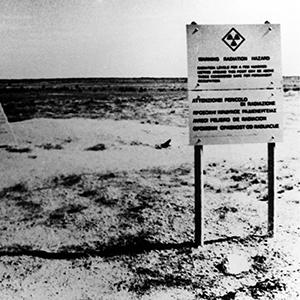 Maralinga , AustraliaBetween 1952 and 1957, the united kingdom conducted seven major and hundreds of minor nuclear tests at the maralinga test site in southern australia..   Goiânia , BrazilThe accident in september 1987 in goiânia was one of the most serious radiation accidents in history. the opening of a radiotherapy machine containing.  Elliot Lake , CanadaAs a lasting legacy of the “golden age” of uranium mining, the radioactive tailings of elliot lake pose a threat to the environment of the great lakes. 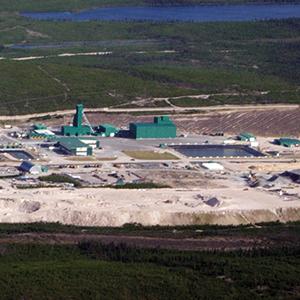 Saskatchewan , CanadaSaskatchewan mines roughly 25 % of the world’s uranium. the radioactive tailings produced by the mining process contaminate native land, pose a health. 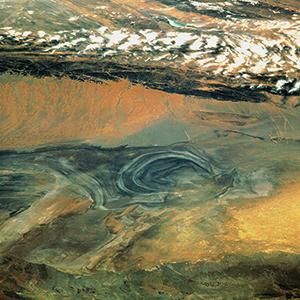 Lop Nor , ChinaBetween 1964 and 1996, the people’s republic of china conducted 45 nuclear tests in lop nor, a lake region in the western province of xinjiang. for. 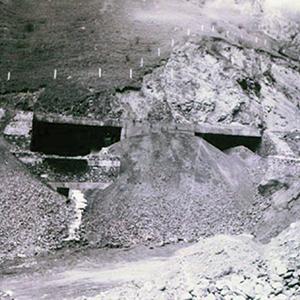 Têwo/Diébù , China“uranium mine 792” at diébù has been producing uranium for the chinese nuclear industry and nuclear weapons program since 1967. reports about. 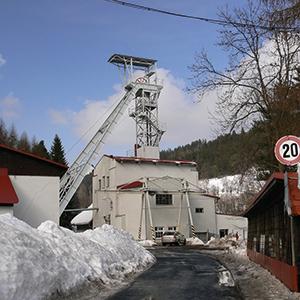 Jáchymov , CzechiaHaving grown rich by the discovery of uranium in its mines, the town of joachimsthal/jáchymov soon became one of the soviet union’s suppliers of.  La Hague , FranceThe reprocessing facility la hague produces plutonium and uranium from spent nuclear fuel. large amounts of plutonium and nuclear waste are stockpiled.  Fangataufa and Moruroa , French PolynesiaNearly 200 nuclear tests were conducted on fangataufa and moruroa atolls, severely contaminating the environment of the archipelago and exposing its. 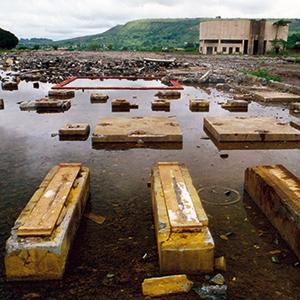 Mounana , GabonDuring decades of uranium mining in the jungle of gabon, the french nuclear company comuf neglected environmental safety standards, exposed mine.  Wismut region , GermanyBetween 1946 and 1990, the joint soviet-east german stock company wismut turned the erzgebirge mountain range in saxony and the adjacent vogtland in.  Thule , GreenlandThe crash of a u.s. air force b-52 bomber with nuclear weapons on board contaminated a large areas of land and the surrounding waters with radioactive.  Jadugoda , IndiaUranium mining in the region around jadugoda has not only contributed to india’s nuclear weapons program, but has caused grave environmental damage as. 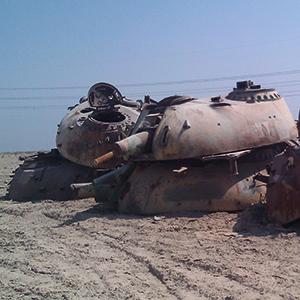 Basra , IraqThe use of depleted uranium (du) ammunition during the gulf war of 1991 caused the local population to be exposed to radioactive uranium dust. this. 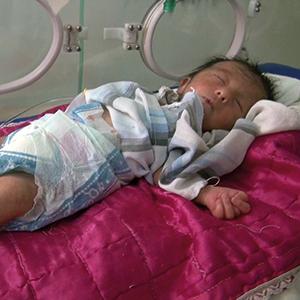 Fallujah , IraqThe use of depleted uranium in the war on iraq in 2003 has led to exposure of the local population to radioactive uranium dust. this could.  Fukushima , JapanThe three reactor meltdowns at the fukushima dai-ichi nuclear power plant in march 2011 caused the greatest radioactive contamination of the world’s. 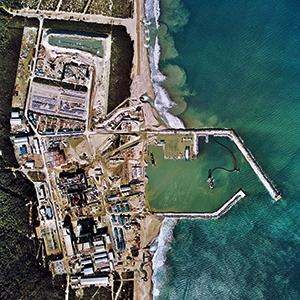 Tōkai-mura , JapanThe accident at the tokai-mura nuclear facility in 1999 irradiated a total of 667 people, two of whom died from acute radiation poisoning. tokai-mura. 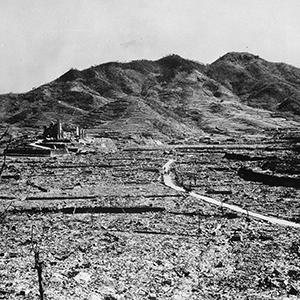 Nagasaki , JapanOn august 9, 1945, the u.s. detonated the nuclear bomb “fat man” over the japanese city of nagasaki, with a population of more than 240,000. the.  Hiroshima , JapanOn august 6, 1945, the u.s. detonated the atomic bomb “little boy” over the city of hiroshima. of the 350,000 citizens, about 140,000 had died by the. 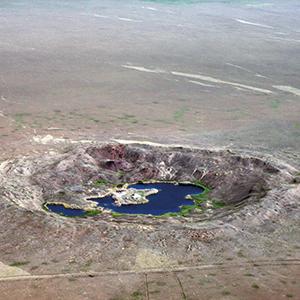 Semipalatinsk , KazakhstanThe story of soviet nuclear testing at semipalatinsk is a cautionary tale of how “national security” can be used to justify willful deception that.  Kiritimati and Malden , KiribatiA total of 33 nuclear detonations were conducted on two atolls of the Republic of Kiribati by the UK and the U.S. in the 1950s and 1960s. Thousands of  Mailuu-Suu , KyrgyzstanThe former uranium mining town of mailuu-suu is notorious for its insecure radioactive waste rock heaps and tailings dumps in tectonically unstable.  Bikini and Eniwetok , Marshall IslandsNuclear testing on the bikini and enewetak atolls left entire islands uninhabitable, exposed thousands to high levels of radioactivity and contributed.  Rössing , NamibiaThe rössing uranium mine has been a cause for concern for more than 30 years. unsafe and inhumane working conditions, occupational exposure to. 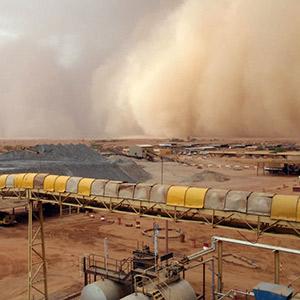 Arlit and Akokan , NigerNiger, a country with one of the world’s lowest ranks on the human development index, is also the world’s third largest producer of uranium. uranium. 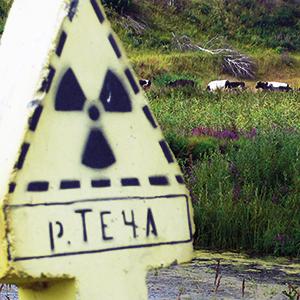 Mayak/Kyschtym , RussiaThrough a series of accidents and spills, the Russian nuclear facility at Mayak contaminated more than 15,000 km² with highly radioactive waste. In  Novaya Zemlya , RussiaFrom 1954 to 1990, the islands of novaya zemlya were used by the soviets to conduct atmospheric and underground nuclear tests. decommissioned nuclear, tomsk-7/seversk , russia. The explosion of a nuclear reprocessing facility in Tomsk-7 dispersed large amounts of radioactivity over an area of 120 km² , exposing tens of 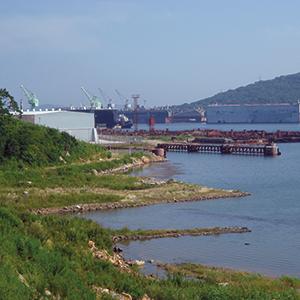 Chazhma Bay , RussiaIn august 1985, an explosion on a soviet nuclear-powered submarine caused a massive release of radioactivity in chazhma bay. more than 290 people.  Witwatersrand , South AfricaInadequate controls and safety standards in the uranium mining industry in the witwatersrand basin have resulted in an environmental catastrophe.. 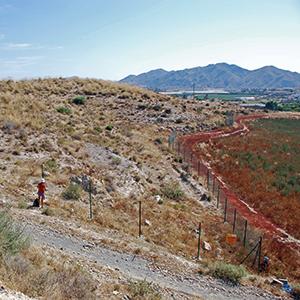 Palomares , SpainIn 1966, four hydrogen bombs were dropped near the spanish city of palomares, when a u.s. b-52 bomber crashed into another plane in mid-air. the non.  Chernobyl , UkraineThe chernobyl nuclear meltdown in april 1986 was the most devastating nuclear catastrophe in history. huge stretches of land were radioactively.  Sellafield/Windscale , United KingdomEurope’s largest civil and military nuclear complex is located in sellafield. it used to produce plutonium for the british nuclear weapons program and. 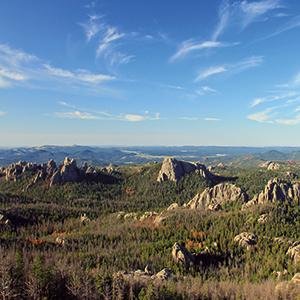 Black Hills/Paha Sapa , United StatesThe black hills are considered a sacred place by the lakota people and are representative of the entire four-state region of south dakota, wyoming,.  Hanford , United StatesAt the hanford site, the u.s. produced most of its weapons-grade plutonium during the cold war. although the compound was decommissioned in 1988, it.  Sequoyah and Watts Bar , United StatesThe twin nuclear power plants of sequoyah and watts bar were included in this exhibition in order to represent nuclear reactors around the world, all. 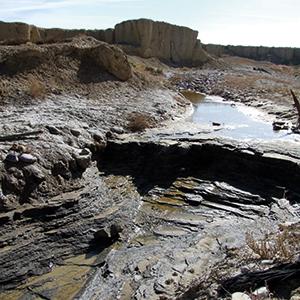 Shiprock/Tsé Bit’ A’í , United StatesThe uranium mine at shiprock left a legacy of health and environmental damage that affects indigenous navajo communities to this day. moreover,.  Amchitka , United StatesThree underground nuclear tests were carried out on the island of amchitka in the north pacific. the most controversial of these, code-named “cannikin.  Three Mile Island , United StatesThe most infamous nuclear reactor accident in u.s. history occurred at the three mile island nuclear plant in march 1979. equipment malfunction,. 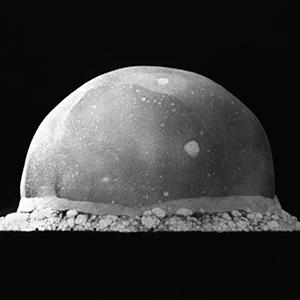 Alamogordo , United StatesThe world’s first nuclear explosion took place near alamogordo on july 16, 1945. this detonation marked the beginning of the “nuclear age,” epitomized. 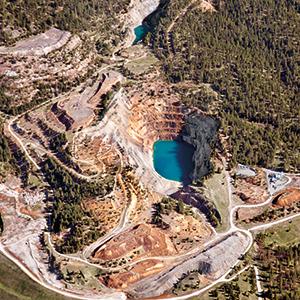 Spokane Reservation , United StatesOver several decades, the spokane reservation was contaminated by open-pit uranium mining and its inhabitants exposed to increased levels of.  Nevada , United StatesMore than 1,000 nuclear detonations at the nevada test site between 1951 and 1992 dispersed massive amounts of radioactive particles across the earth,.  Church Rock/Kinłitsosinil , United StatesIn july 1979, a dam breach at the united nuclear corporation’s uranium mill in church rock, new mexico released massive amounts of radioactive waste, satellite map.  - » Donate
- » Contact & Privacy
 Tomsk-7/Seversk, RussiaNuclear facility The explosion of a nuclear reprocessing facility in Tomsk-7 dispersed large amounts of radioactivity over an area of 120 km² , exposing tens of thousands of people to increased levels of radiation and contaminating air, water and soils for many generations to come. It is considered the most serious Russian nuclear accident after Chernobyl and the Kyshtym accident at Mayak. Tomsk-7 was a “secret city” in Siberia until 1992, when it reverted to its historical name of Seversk. It housed several nuclear facilities for large-scale production of plutonium and uranium for nuclear fuel and weapons, including reprocessing of spent fuel. The closed city was home to about 100,000 workers and their families. One of the worst accidents in the history of the Russian nuclear industry occurred at the Tomsk-7 reprocessing facility on April 6, 1993. That day, workers were pouring nitric acid into a tank in order to separate plutonium from spent nuclear fuel. It is not clear whether the accident was caused by human or technical error, but it is believed that a lack of compressed air caused the mixture of nitric acid, uranium and plutonium to overheat and reach critical temperatures within a few minutes. The ensuing explosion knocked down walls on two floors of the complex, started a fire and released about 250 m³ of radioactive gas, 8.7 kg of uranium and 500 g of plutonium to the environment. This amounted to about 30 Tera-Becquerel (Tera = trillion) of beta- and gamma-emitters and about 6 Giga-Becquerel (Giga = billion) of plutonium-239. An area of 1,500 m² around the plant was severely contaminated, while the radioactive plume covered a total area of 120 km², where increased levels of radioactivity could be detected. The explosion at Tomsk-7 was ranked level 4 of the International Nuclear and Radiological Event Scale (INES), comparable to the Tokai-mura nuclear accident in Japan in 1999. Health and environmental effectsMost acutely affected by nuclear fallout were the villages of Georgievka and Nadezhda. Radioactive snowfall in the days after the disaster created hot-spots with radiation levels of up to 30 µGy/h – approximately 100 times normal background radiation. Soils in the areas affected by radioactive fallout showed significantly increased levels of long-lived radioisotopes such as cesium-137 or strontium-90. Cesium-137 can cause solid tumors and genetic defects in offspring when inhaled or ingested through food or water, while strontium-90 is a known cause for leukemia. With the help of foreign specialists, initial clean-up operations were able to collect and remove about 577 g of plutonium from the area around Tomsk-7. Interestingly enough, only about 450 g of plutonium had been present in the basin before to the explosion, suggesting unreported prior plutonium leaks from the facility. Even months after the explosion, snow samples continued to show increased levels of radioactive isotopes such as plutonium, uranium, zirconium, ruthenium, cerium, niobium and antimony, continually exposing the population to radioactivity. According to the Bellona Foundation, a Norwegian environmental NGO, about 30 major accidents occurred at the Tomsk-7 nuclear facility, releasing about 10 g of plutonium into the atmosphere each year. The NGO also documents large quantities of nuclear waste from 50 years of plutonium production, which have accumulated on the confines of the nuclear facility. Dumped into underground depots or pumped into uncovered holding pools, they pose a continued threat to health. In 2008, a study found increased levels of plutonium and cesium-137 in soils and water samples, suggesting further leaks. Some reactors at Tomsk-7 were shut down in June 2008, following the 2003 agreement between Russia and the U.S. concerning the elimination of weapons-grade plutonium production. The reprocessing of spent fuel and the dumping of nuclear waste on the premises of what is now called the Siberian Chemical Combine continue to this day, however. Despite the findings of increased levels of plutonium, strontium, cesium and other radioactive particles in soil and water, no meaningful medical studies were performed on the local population. In 2001, a county court in Tomsk ruled on a lawsuit by contaminated inhabitants of the village of Georgievka against the Siberian Chemical Combine, deciding that the company was to pay each claimant a compensation sum equivalent of 860 US-Dollars. During the hearings, 14 of the 26 claimants passed away, according to the Bellona Foundation. Their health was compromised for the production of nuclear fuel and nuclear warheads. They, and everyone else in the area whose health was affected by the catastrophe at Tomsk-7, are also Hibakusha. - “The radiological accident at the reprocessing plant at Tomsk.” International Atomic Energy Agency (IAEA), October 1998. www-pub.iaea.org/mtcd/publications/pdf/p060_scr.pdf
- Alimov R. “People vs. Siberian Chemical Combine.” Website of the Bellona Foundation, February 10, 2001. http://bellona.ru/bellona.org/english_import_area/international/russia/nuke_industry/siberia/seversk/22031
- Gauthier-Lafaye F. “Radioisotope contaminations from releases of the Tomsk-Seversk nuclear facility.” Journal of Environmental Radioactivity 2008 Apr;99(4):680-93. www.ncbi.nlm.nih.gov/pubmed/17996340
- Goulet M. “Siberia Nuclear Waste – Case 393.” American University Washington. www1.american.edu/ted/sibnuke.htm
Download poster Download poster as PDF for printing Alamogordo (USA) Amchitka (USA) Arlit & Akokan (Niger) Basra (Iraq) Bikini and Enewetak Atolls (Marshall Islands) Black Hills/Paha Sapa (USA) Chazhma Bay (Russia) Chernobyl (Ukraine) Church Rock/Kinłitsosinil (USA) Elliot Lake (Canada) Emu Field (Australia) Ezeiza (Argentina) Fallujah (Iraq) Fangataufa and Moruroa (French Polynesia) Fukushima (Japan) Goiânia (Brazil) Hanford (USA) Hiroshima (Japan) In Ekker (Algeria) Jáchymov (Czech Republic) Jadugoda (India ) Kiritimati and Malden (Kiribati) La Hague (France) Lop Nor (China) Mailuu-Suu (Kyrgyzstan) Mayak (Russland) Maralinga (Australia ) Mounana (Gabon) Nagasaki (Japan) Nevada Test Site (USA) Novaya Zemlya (Russia) Olympic Dam (Australia) Palomares (Spain) Radium Hill (Australia) Ranger (Australia) Reggane (Algeria) Rössing (Namibia) Saskatchewan (Canada) Sellafield/Windscale (UK) Semipalatinsk (Kazakhstan) Sequoyah and Watts Bar (USA) Shiprock/Tsé Bit’ Aí (USA) Spokane Reservation (USA) Têwo/Diébù (China) Three Mile Island (USA) Thule (Greenland) Tokai-mura (Japan) Tomsk-7/Seversk (Russia) Wismut region (Germany) Witwatersrand (South Africa)  | 

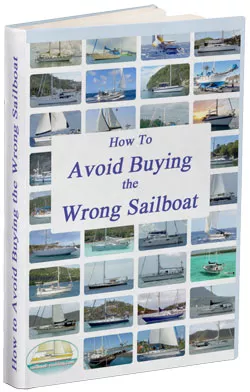






























































IMAGES
VIDEO
COMMENTS
LENGTH: Traditionally, LOA (length over all) equaled hull length. Today, many builders use LOA to include rail overhangs, bowsprits, etc. and LOD (length on deck) for hull length. That said, LOA may still mean LOD if the builder is being honest and using accepted industry standards developed by groups like the ABYC (American Boat and Yacht Council).
The Moody 346 is a 34.5ft masthead sloop designed by Bill Dixon and built in fiberglass by Moody Yachts (A. H. Moody & Sons) between 1986 and 1990. ... The data on this page has been derived from different sources but a significant part is attributed to sailboatdata.com. We thank them for their encouragements and friendly collaboration.
The technical storage or access is strictly necessary for the legitimate purpose of enabling the use of a specific service explicitly requested by the subscriber or user, or for the sole purpose of carrying out the transmission of a communication over an electronic communications network.
Though the company was founded in the mid-19th century, the first yacht was built in 1934. The Moody 33 by Angus Primrose in 1972 was first production yacht developed jointly between A.H. Moody & Son Ltd, Southampton and Princess Yachts International (Formerly Marine Projects). It was an immediate success and the MOODY brand was born. Moody has a long earned reputation among experienced ...
The Moody 346 is a renowned sailboat model produced by Moody, one of UK's distinguished boat manufacturers. It was designed by renowned yacht architect, Bill Dixon, and introduced in 1986 as a successor to the 34 model. The mid-sized yacht features a combination of comfort and performance, ideal for both cruising and blue water adventures.
Moody 346 is a 34′ 6″ / 10.5 m monohull sailboat designed by Bill Dixon and built by Moody Yachts (A. H. Moody & Sons) between 1986 and 1990. ... sailboatdata.com / CC BY. Embed Embed. View Demo.
drw Moody 346 - exhaust mixer box. drw P-bracket instalation. Mood 31 34 346 all boats. Moody 346 - all boats. Moody 346 - brochure. Moody 346 - complete boat list (2) Moody 346 - complete boat list 1jan1987. Moody 346 - complete boat list. Moody 346 - costed BOM.
The Moody 34 and 346 are virtually identical, except that the 346 has a transom bathing/boarding platform. The Moody 346 continued in production until mid-1990, proving one of the most successful designs for the company: The hulls were built for Moody's by Marine Projects, to Lloyds specifications, each hull having a Lloyds Hull Release note. ...
Sailboat MOODY 346 1990 - Aava. Sailboat MOODY 346 1990 - Aava. Sailboat information Blog mentions. Yacht description. Translation; Original; This is an automatic translation of the description. There may be inaccuracies. See original for details. A yacht with a central cockpit and a spacious aft master cabin. Has a Lloyd's certificate.
The Moody 346 was introduced in June 1986 as an update to the Moody 34, itself a modernised replacement for the old Angus Primrose designed Moody 33/333 range. These Dixon-designed models were considerably sleeker looking than the earlier Primrose designs, yet retained all the virtues of interior space and good sailing performance.
The immersion rate is defined as the weight required to sink the boat a certain level. The immersion rate for Moody 346 is about 202 kg/cm, alternatively 1135 lbs/inch. Meaning: if you load 202 kg cargo on the boat then it will sink 1 cm. Alternatively, if you load 1135 lbs cargo on the boat it will sink 1 inch.
DEFINITIONS "P" is the luff length of the mainsail, measured along the aft face of the mast from the top of the boom to the highest point that the mainsail can be hoisted or black band. "E" is the foot length of the mainsail, measured along the boom from the aft face of the mast to the outermost point on the boom to which the main can be pulled or to the black band.
Sail Moody 346 boats for sale in Pwllheli. Save Search. Clear Filter Make / Model: Moody - 346 State: Gwynedd Country: United Kingdom City: pwllheli Category: All Sail. Location. By Radius. By Country. country-all. All Countries. Country-GB. United Kingdom. All. Alle 25 km 50 km 100 km 200 km 300 km 500 km 1000 km 2000 km 5000 km.
The Moody 346 is a 34.5ft masthead sloop designed by Bill Dixon and built in fiberglass by Moody Yachts (A. H. Moody & Sons) between 1986 and 1990. 254 units have been built. The Moody 346 is a moderate weight sailboat which is a reasonably good performer. It is very stable / stiff and has a low righting capability if capsized.
1988 Moody 346. US$58,549. Network Yacht Brokers | Preveza, Greece. Request Info. <. 1. >. * Price displayed is based on today's currency conversion rate of the listed sales price. Boats Group does not guarantee the accuracy of conversion rates and rates may differ than those provided by financial institutions at the time of transaction.
Find Moody 346 boats for sale in your area & across the world on YachtWorld. Offering the best selection of Moody boats to choose from.
This was first production yacht developed jointly between A.H. Moody & Son Ltd, Southampton and Princess Yachts International (Formerly Marine Projects). It was an immediate success and models have appeared ever since. In total, during the past 30 years over 4,500 Moody Yachts have been delivered both in the United Kingdom and throughout the ...
Moody 346. When designing and producing quality products C&J Marine Ltd ensure that attention to detail is of the utmost priority. From coastal day sailing through to blue water adventures; from compact, multi-functional on-board living to grand designs and style, our design and manufacturing experience, products and services are second to none
Tomsk-7 was a "secret city" in Siberia until 1992, when it reverted to its historical name of Seversk. It housed several nuclear facilities for large-scale production of plutonium and uranium for nuclear fuel and weapons, including reprocessing of spent fuel. The closed city was home to about 100,000 workers and their families.
Tomsk-7 was a "secret city" in Siberia until 1992, when it reverted to its historical name of Seversk. It housed several nuclear facilities for large-scale production of plutonium and uranium for nuclear fuel and weapons, including reprocessing of spent fuel. The closed city was home to about 100,000 workers and their families.
Founded in 1949, the city of Seversk was known as Tomsk-7 closed city in Tomsk Oblast until 1992 [1-3]. The production of plutonium took place in the reactors I-1, EI-2, ADE-3, ADE-4, and ADE-5, which were brought into operation in the period from 1955 to 1967. The first three reactors were shut down between August 1990 and August 1992.
Seversk is a closed city in Tomsk province, Russia. It was a "secret city" in until 1992, when it reverted to its historical name of Seversk .It is the site of the Siberian Chemical Combine (SCC) (codenamed Tomsk-7), founded in 1954 by Russian Nuclear Regulatory.It comprises several nuclear reactors and chemical plants for separation, enrichment, and reprocessing of uranium and plutonium .